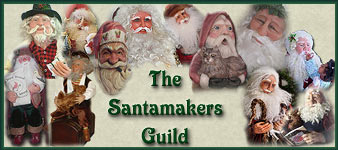Well, I said I'd do it, and I did it. I painted a lovespoon. Actually, two. The first was the"uff-da" spoon that I painted with multi-colored acrylics just to see what it looked like. The second was the twin of the "uff-da" spoon, without the miscalculation. Looking at the photo above you can see that I painted the sides of the "fountain" the same antique gold that I painted the inside of the bowl. The other spoon I painted with raw sienna to get away from the unrelieved white of bare basswood. Here is a photo from a different angle.
The diamond on the lower spoon was too large. Everything was fine while I was carving it, but when I began to oil the thing, hanging onto the upper part while wiping the bowl with oil, the thing snapped at the diamond cut out. Out came the super glue!
I like both spoons. I think comparing them as to which I like better is a lot like comparing apples and oranges: they are different animals. If you would like to see more on this subject, check out The Woodbee Carver. He put it so much better than I could.
I did do some more work on the spalted maple lovespoon. BTW, pay no attention to that idiot that hijacked my blog last time to say that spalted maple was hard, but not unreasonably so! Maple, even spalted maple, is no wood for the casual carver, unless, of course, they carve with power. In which case it doesn't matter how hard the wood is. If you are doing it with a knife, however, don't expect to take a slice more than a 64th of an inch thick with any regularity.
Actually it isn't unreasonably hard, you just have to change the way you carve, unless maybe you're a rock climber who can lift his entire body weight just by closing his hand. Using a standard paring cut makes my hand cramp within a couple of minutes. To do the piercings I changed from doing a paring cut with a standard sloyd-type knife to using a couple of bent knives. That way I use my forearm muscles instead of my hand muscles.
 The blades are double-edged, slow curved, one with an inside bevel and one with an outside bevel. They are made by Mike Komick at Preferred Edge. I made the handles myself (still need a little work). The inside bevel blade is great for the straight cuts inside the piercings, and the outside bevel blade makes those inside curves a cinch.
The blades are double-edged, slow curved, one with an inside bevel and one with an outside bevel. They are made by Mike Komick at Preferred Edge. I made the handles myself (still need a little work). The inside bevel blade is great for the straight cuts inside the piercings, and the outside bevel blade makes those inside curves a cinch.Gotta go get the meatloaf out of the oven. Until next time, let those chips fly!






















